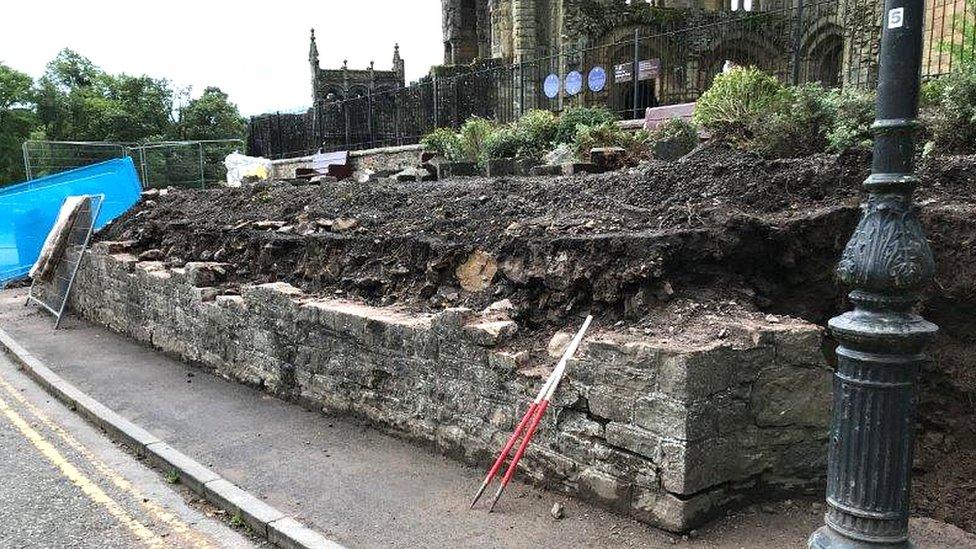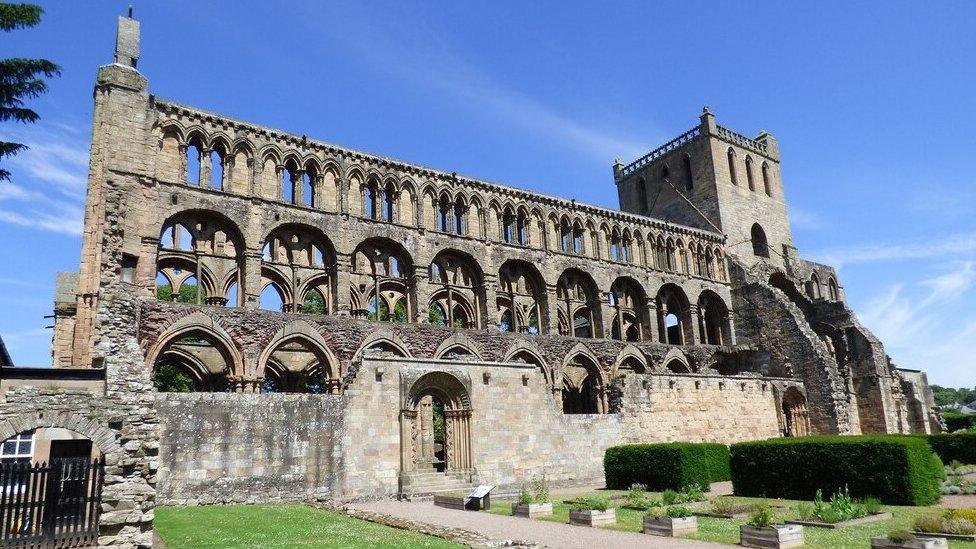Jedburgh Abbey skeletons to end up in Edinburgh
- Published

The skeletons will be used for research at the National Museum of Scotland
Two skeletons unearthed during repairs at a Borders abbey are to have their next resting place at the National Museum of Scotland (NMS) in Edinburgh.
The skeletal remains of a man and a woman were found in 2020 during refurbishment work at Jedburgh Abbey.
It is hoped that further analysis of the bones will reveal more about the medieval inhabitants of the site.
Dr Alice Blackwell said they had the research potential to yield "valuable information".

The remains were unearthed during repairs to the abbey's rampart walls
Work on the rampart walls was stopped in September 2020 when the skeletons were unearthed.
An archaeology team recorded the find and sensitively removed them for further study.
Initial studies of the bones found that the male was aged between 25 and 35 when he died, while the woman would have been between 22 and 30.
They were stored along with individual bones from 26 other people, including an infant, that were also found during the ramparts work.

Research using the skeletons could reveal more about the medieval inhabitants of the abbey
Last month the Crown's representative in Scotland - the King's and Lord Treasurer's Remembrancer - approved recommendations by the Scottish Archaeological Finds Allocation Panel to allocate the two skeletons to the national museum.
Dr Blackwell, who is the senior curator of medieval archaeology and history at NMS, believes the skeletons could help to build up the picture of life at Jedburgh Abbey.
She said: "The human remains and associated artefacts from the recent excavations at Jedburgh Abbey join a substantial and very significant medieval assemblage from previous excavations at the abbey already in the national collection.
"The human remains which came to us as part of this assemblage are currently undated.
"However, if they are found to date to the medieval period, they have the research potential through osteoarchaeological and scientific analyses to yield valuable information about the lives of the people who lived at or near the abbey at that time."
Historic Environment Scotland, which manages Jedburgh Abbey, declined to comment.
Related topics
- Published2 September 2020
